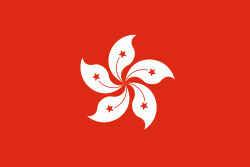Tuen Mun (Tuen Mun)
Tuen Mun or Castle Peak is an area near the mouth of Tuen Mun River and Castle Peak Bay in the New Territories, Hong Kong. It was one of the earliest settlements in what is now Hong Kong and can be dated to the Neolithic period. In the more recent past, it was home to many Tanka fishermen who gathered at Castle Peak Bay. Tuen Mun is now a modern, mainly residential area in the north-west New Territories. As of 2011, 487,546 live in Tuen Mun and over 95% of them are Chinese.
During the Tang dynasty (618–907), a navy town, Tuen Mun Tsan was established in Nantou, which lies across Deep Bay. Tuen Mun and the rest of Hong Kong were under its protection.
A major clan, To, brought the name Tuen Mun to the area. They migrated from Jiangxi on the Chinese mainland and established a village Tuen Mun Tsuen late in the Yuan dynasty (1272–1368). As more and more villages were established, the village was renamed Tuen Mun Tai Tsuen, which means "large village" in Chinese. As yet more villages were established, a market town of Tuen Mun Hui was established. This town lies where present-day Tuen Mun Kau Hui is situated, which name means "old market", as opposed to San Hui or "new market".
Tuen Mun remained an important town of coastal defence until the start of British rule in 1898. When the British took over the New Territories from the Qing government in this year, the area was renamed Castle Peak, and Tuen Mun Hui to Castle Peak Market or Tsing Shan Hui. The name Tuen Mun, however, continued to be used by those living in the area.
In 1965, "Castle Peak New Town" was planned. It was later renamed Tuen Mun New Town and constructed from 1970 onwards with many buildings on the reclaimed land of the former Castle Peak Bay. The name was officially changed back to Tuen Mun in 1972. The first public housing estate built in the town was Castle Peak Estate, opened 1971.
During the Tang dynasty (618–907), a navy town, Tuen Mun Tsan was established in Nantou, which lies across Deep Bay. Tuen Mun and the rest of Hong Kong were under its protection.
A major clan, To, brought the name Tuen Mun to the area. They migrated from Jiangxi on the Chinese mainland and established a village Tuen Mun Tsuen late in the Yuan dynasty (1272–1368). As more and more villages were established, the village was renamed Tuen Mun Tai Tsuen, which means "large village" in Chinese. As yet more villages were established, a market town of Tuen Mun Hui was established. This town lies where present-day Tuen Mun Kau Hui is situated, which name means "old market", as opposed to San Hui or "new market".
Tuen Mun remained an important town of coastal defence until the start of British rule in 1898. When the British took over the New Territories from the Qing government in this year, the area was renamed Castle Peak, and Tuen Mun Hui to Castle Peak Market or Tsing Shan Hui. The name Tuen Mun, however, continued to be used by those living in the area.
In 1965, "Castle Peak New Town" was planned. It was later renamed Tuen Mun New Town and constructed from 1970 onwards with many buildings on the reclaimed land of the former Castle Peak Bay. The name was officially changed back to Tuen Mun in 1972. The first public housing estate built in the town was Castle Peak Estate, opened 1971.
Map - Tuen Mun (Tuen Mun)
Map
Country - Hk
 |
 |
Hong Kong was established as a colony of the British Empire after the Qing Empire ceded Hong Kong Island from Xin'an County at the end of the First Opium War in 1841 then again in 1842. The colony expanded to the Kowloon Peninsula in 1860 after the Second Opium War and was further extended when Britain obtained a 99-year lease of the New Territories in 1898. British Hong Kong was occupied by Imperial Japan from 1941 to 1945 during World War II; British administration resumed after the surrender of Japan. The whole territory was transferred to China in 1997. As one of China's two special administrative regions (the other being Macau), Hong Kong maintains separate governing and economic systems from that of mainland China under the principle of "one country, two systems".
Currency / Language
| ISO | Currency | Symbol | Significant figures |
|---|---|---|---|
| HKD | Hong Kong dollar | $ | 2 |
| ISO | Language |
|---|---|
| ZH | Chinese language |
| EN | English language |















